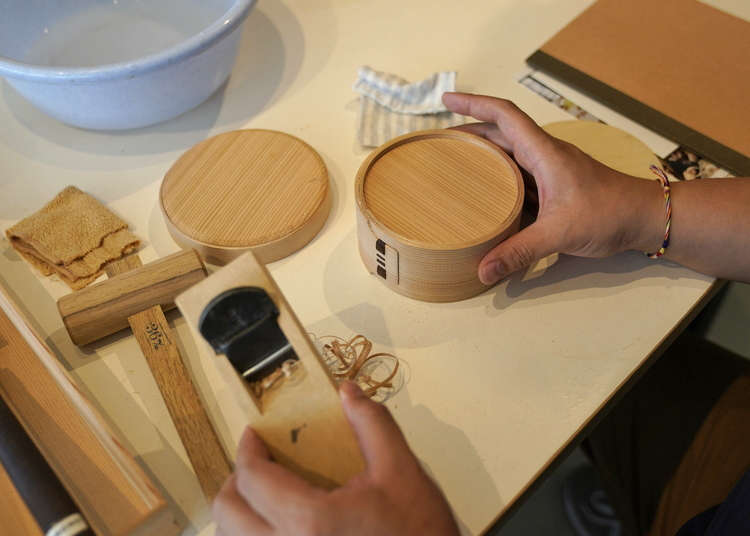
Odate City is in the northernmost part of Akita Prefecture. The city offers visitors the chance to learn more about unique traditional crafts such as magewappa (bent woodware.) You can also get to know the famous Akita dog breed, savor local produce, and experience the warmth of the people who operate the area's facilities.
Magewappa: a unique Japanese craft with strong Odate connections
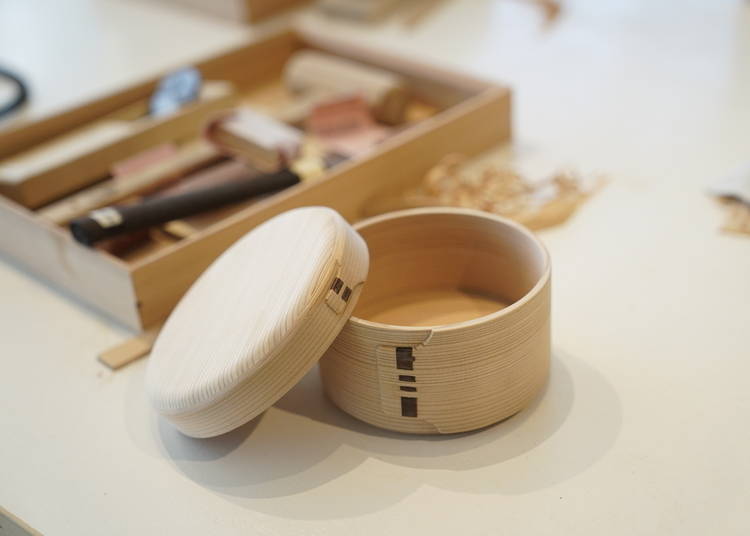
The craft of magewappa (bent woodware) has a 400-year-long history in Odate. Originally, local woodcutters and artisans used the cedar trees that surround the area to create beautiful and functional items such as trays, lunch boxes, and wooden containers for cooked rice, and the craft still survives today.
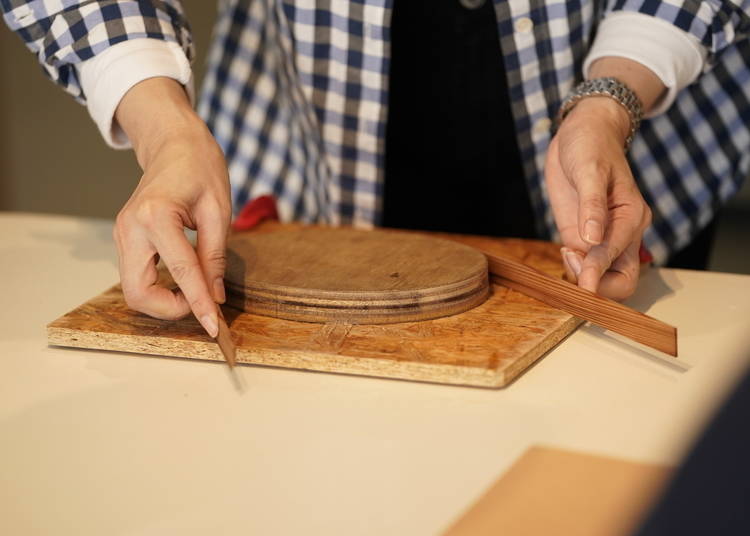
To create magewappa items, craftsmen boil thin strips of straight-grained cedar until they're pliable, then fashion the pieces into different shapes. A bottom and a wood finish are added, and the item is polished. This is, of course, a simplified explanation of an intricate craft that has been passed down through generations. Presently, around eight Odate companies specialize in magewappa.
Tradition, food, and community at the Wappa Building
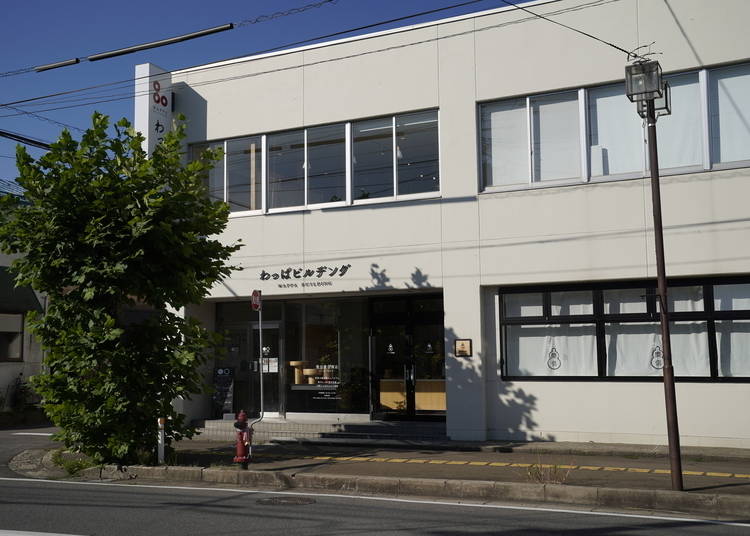
If you're interested in magewappa, then the Wappa Building—300 meters south of the JR Odate Station—should top your list of places to visit. True to its name, the building's exterior and interior are inspired by magewappa itself, using white as a base to emphasize the rich colors of the cedar. Inside the building, a craft shop, Shibata Yoshinobu Shoten, sells magewappa pieces; S.witch cafe serves delicious tea, coffee, and assorted desserts; and Maruwwa rents out office space. These facilities respectively embody the building's three concepts of "tradition," "food," and "community."
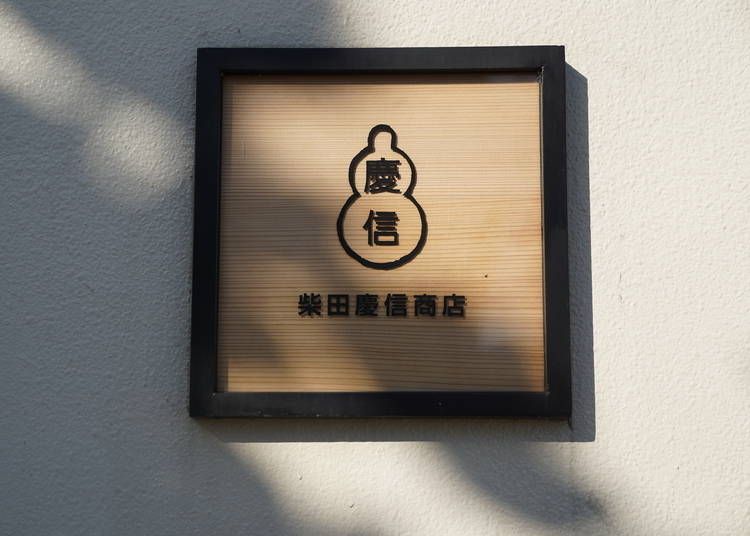
To create your very own bento box, head to Shibata Yoshinobu Shoten (the first shop on the left when approaching from the train station). Upon entering, you'll see myriad magewappa pieces that include bento boxes, trays, cups, and other items. The shop has a light and airy interior and exudes a refreshing cedar fragrance.
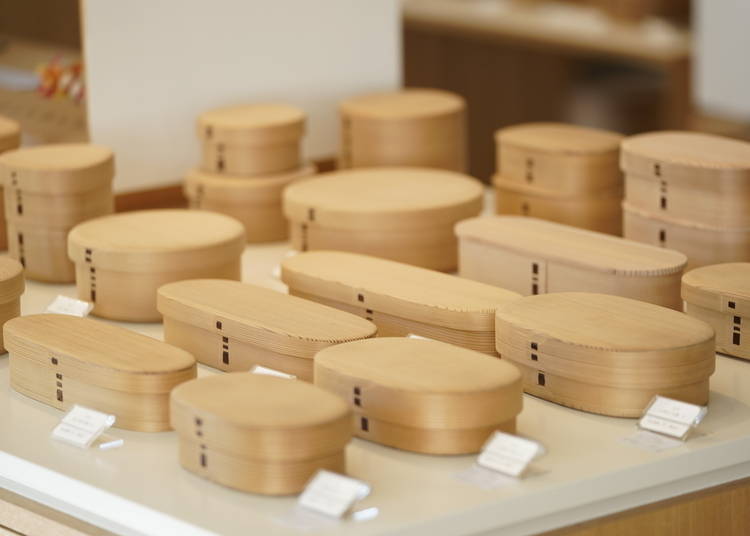
Shibata Yoshinobu Shoten is operated by the second-generation owner, Yoshimasa Shibata, who uses his years of experience to teach visitors the secrets of magewappa.
Create your own magewappa pieces
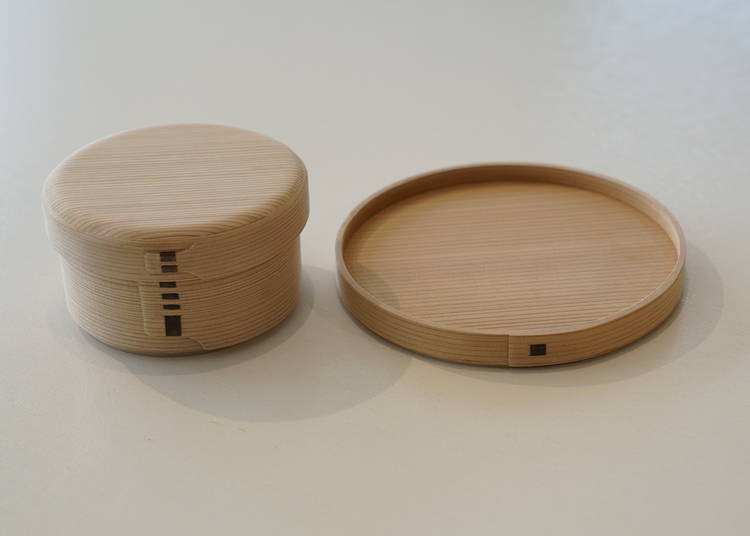
Choose to make either a round-shaped bento box (6,050 yen) or a small plate (3,850 yen—prices include both the lesson and the item itself). The whole experience lasts between 90 and 120 minutes, depending on how many people take the class. Lessons take place at comfortable tables and each seat has the tools and materials necessary for your chosen creation.
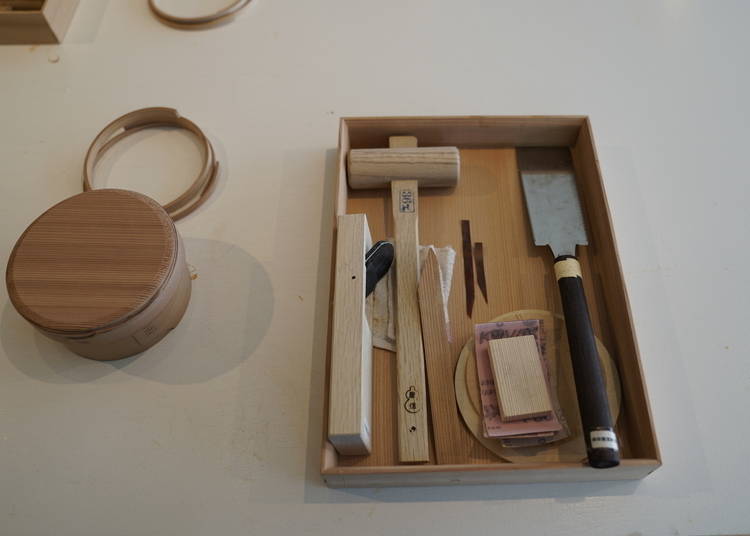
Yoshimasa explains how to bend straight pieces of wood into a rounded shape. To ensure the wood strip doesn't break, it's soaked in hot water (80 C) then shaped into a circle using a wooden template. After five seconds, the circle is clipped together. Typically, the wooden band needs four weeks before it can be used, but as the lesson only lasts around two hours, Yoshimasa prepares the two main parts of the bento box: a wide strip of wood and a thinner one. These parts are destined to become the container and lid, respectively.

The two sides of the piece are joined together with glue and decorated with a thin strip of mountain cherry bark, which is passed through the slits on the side. Yoshimasa explains that simply looping the strip through won't do, so he shows us a method known as kabatoji—literally, "birch-binding." This bit is tricky and requires concentration, so be sure to follow Yoshimasa's instructions carefully. If in doubt, watch the way he does it as he creates his own box.
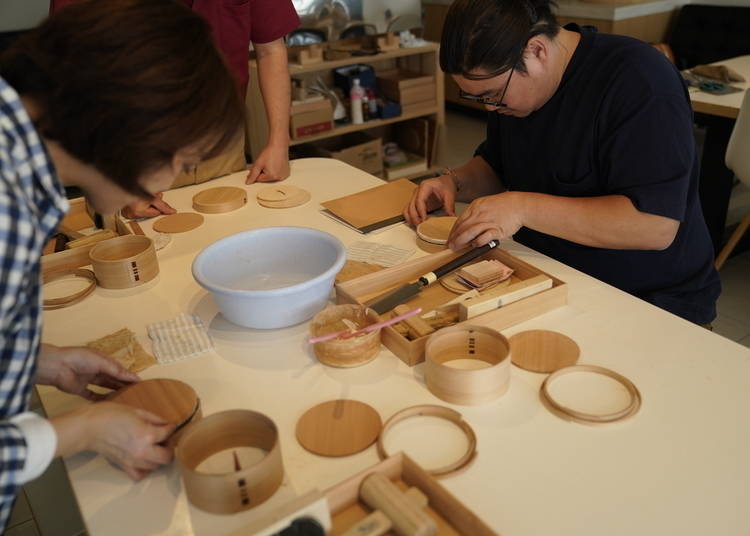
The next step is to affix the lid and bottom pieces using thinly applied special glue (it's important to ensure the wood grain runs horizontally to the slits in the bark). Yoshimasa will show you how to use a wood scrap when hammering the parts together, thus avoiding damage to your creation. Interestingly, different cloths are used to wipe away the excess glue: a dry cloth for the external surface and a damp cloth for the internal part.
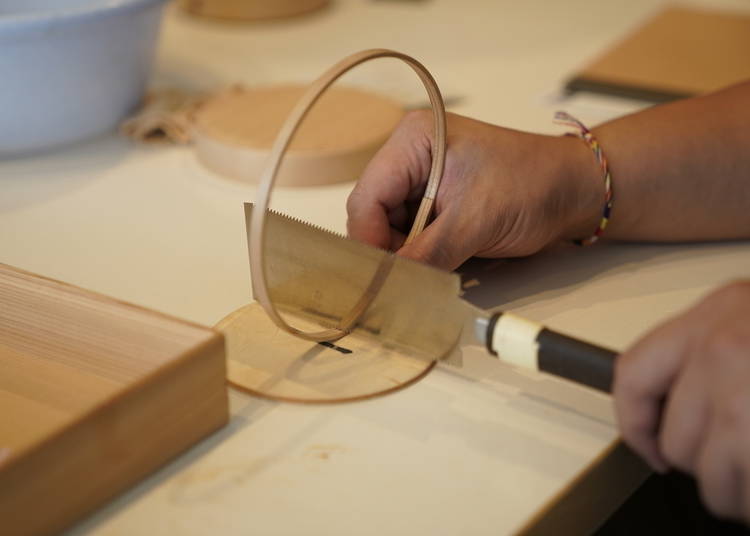
As glue alone isn't enough to hold the parts together, a thinner strip of wood is added to add strength. The strips don't fit exactly, so Yoshimasa measures and marks the area to be cut. Observe Yoshimasa's actions carefully—there's a knack required to using the special saw.

With the main bento box finished, it's time to add the polished sheen that makes magewappa pieces so famous. Four different types of sandpaper are used, each with a different level of roughness. Following Yoshimasa's lead, sand the surface using circular motions.
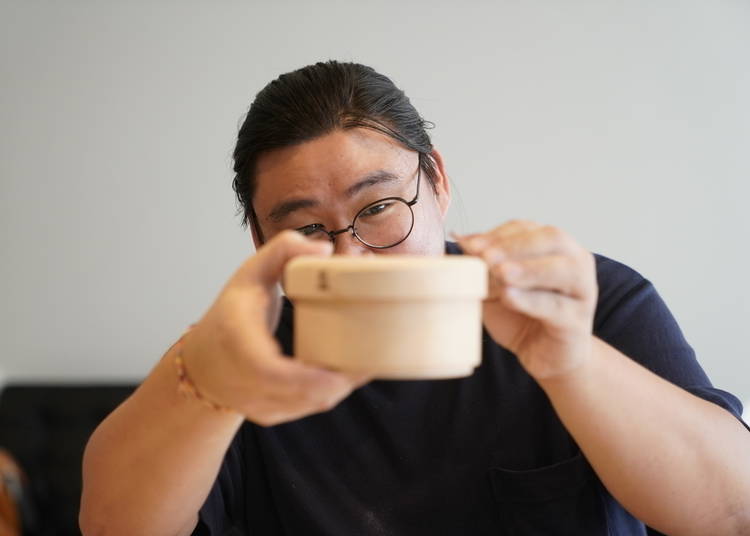
Four rounds of sanding are required (one for each kind of sandpaper). You'll likely feel a growing sense of pride as the surface becomes increasingly smooth. After sanding, your creation is complete, ready to be washed and used as a bona fide bento box.
A rewarding lesson in patience and concentration
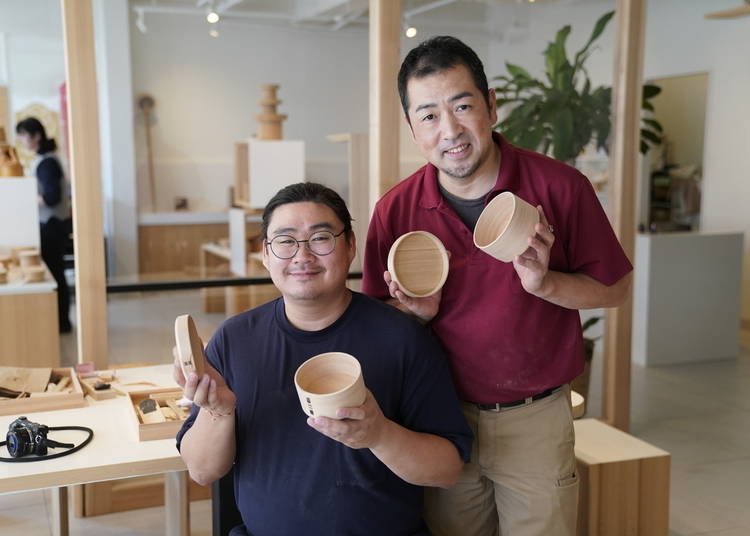
Yoshimasa teaches both domestic and international visitors at his shop. Although he doesn't speak English, you can simply copy his example as you work; the process transcends words and language. With plastic containers now being the norm, it's refreshing to return to tradition and use a wooden bento box, especially one that taps into a 400-year-old tradition.
-
Shibata Yoshinobu Shoten, Wappa Building Store柴田慶信商店 わっぱビルヂング店
- Address 1-12-27 Onari-cho, Odate, Akita
Program: Magewappa (bent woodware) making
Fees: 6,050 yen for round bento box; 3,850 yen for small plate (tax included)
Requirements: Reservations must be made advance (email only)
Closed: Tuesdays
Languages available: Japanese
Organization name: Shibata Yoshinobu Shoten
Organization address: 2-15-28 Onari-cho, Odate, Akita
Email: info@wappa-building.com
- Area
- Category
*Prices and options mentioned are subject to change.
*Unless stated otherwise, all prices include tax.
Popular Tours & Activitiess
Recommended places for you
-

Sado Gold Mine
Winter
Niigata And Sado
-

Aomori Museum of Art
Art Museums
Aomori, Hirosaki And Hachinohe
-

Lake Tazawa
Rivers, Lakes & Canyons
Surrounding Areas Of Akita
-

Sendai Tanabata Festival
Japanese Festivals (Matsuri)
Sendai And Matsushima
-
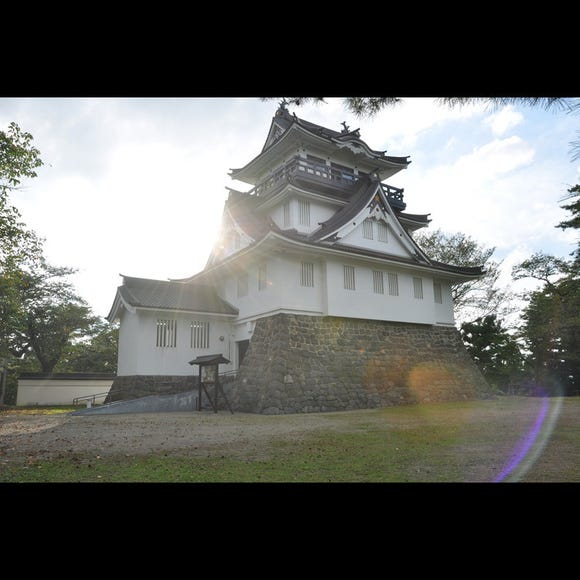
Yokote Park
Parks
Surrounding Areas Of Akita
-
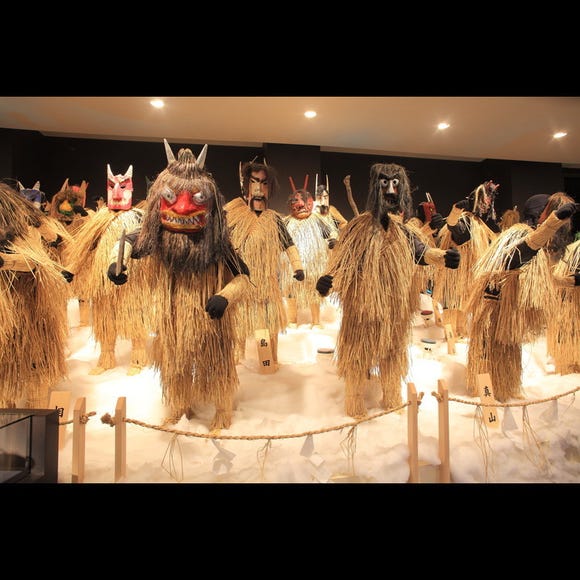
Namahage Museum
Other Museums
Surrounding Areas Of Akita
-

Aomori's Quiet Side in Autumn: 5 Scenic Spots in Hachinohe According to a Local
by: Marco Blasco
-

Shopping in Akita: 11 Must-Buy Souvenirs & Where to Shop Near the Station and Airport
by: ShiroKu inc.
-

Smart Ways to Avoid Crowds and Enjoy a Safe, Comfortable Trip to Myoko, Niigata Prefecture.
-
Ad

Just one stop from Haneda Airport! "Truly Japanese!" Food, Fun, and Knowledge Gather at HICityⓇ Enjoy An Electrifying Night at "Japan Night Fever: Haneda Innovation City"
by: Yohei Kato
-

Niigata Sake no Jin 2026: Guide to Japan's Most Legendary Sake Weekend
-

Shopping in Niigata: 9 Must-Buy Souvenirs & Local Sake to Take Home
by: ShiroKu inc.
-

Japan's Shinkansen Goes Half-Price!? JR East Launches "Osakini Tokudane Special (50% Off)"
-

Yamagata Prefecture Guide: Destinations, Activities, Travel Advice, Shopping & More
by: Steve Csorgo
-

50% Off Shinkansen Tickets?! 'Osakini Tokudane Special' Has Been Extended – Now for Gran Class Too!
-

Complete Guide to Buying Japanese Medicine in Japan: Phrases and Vocabulary You Need to Know
-

Togatta Onsen Guide: Best 6 Places to Indulge Yourself in Miyagi Prefecture's Magical Hot Springs Resort Village
-

6 Surprisingly Cheap Things in Japan













